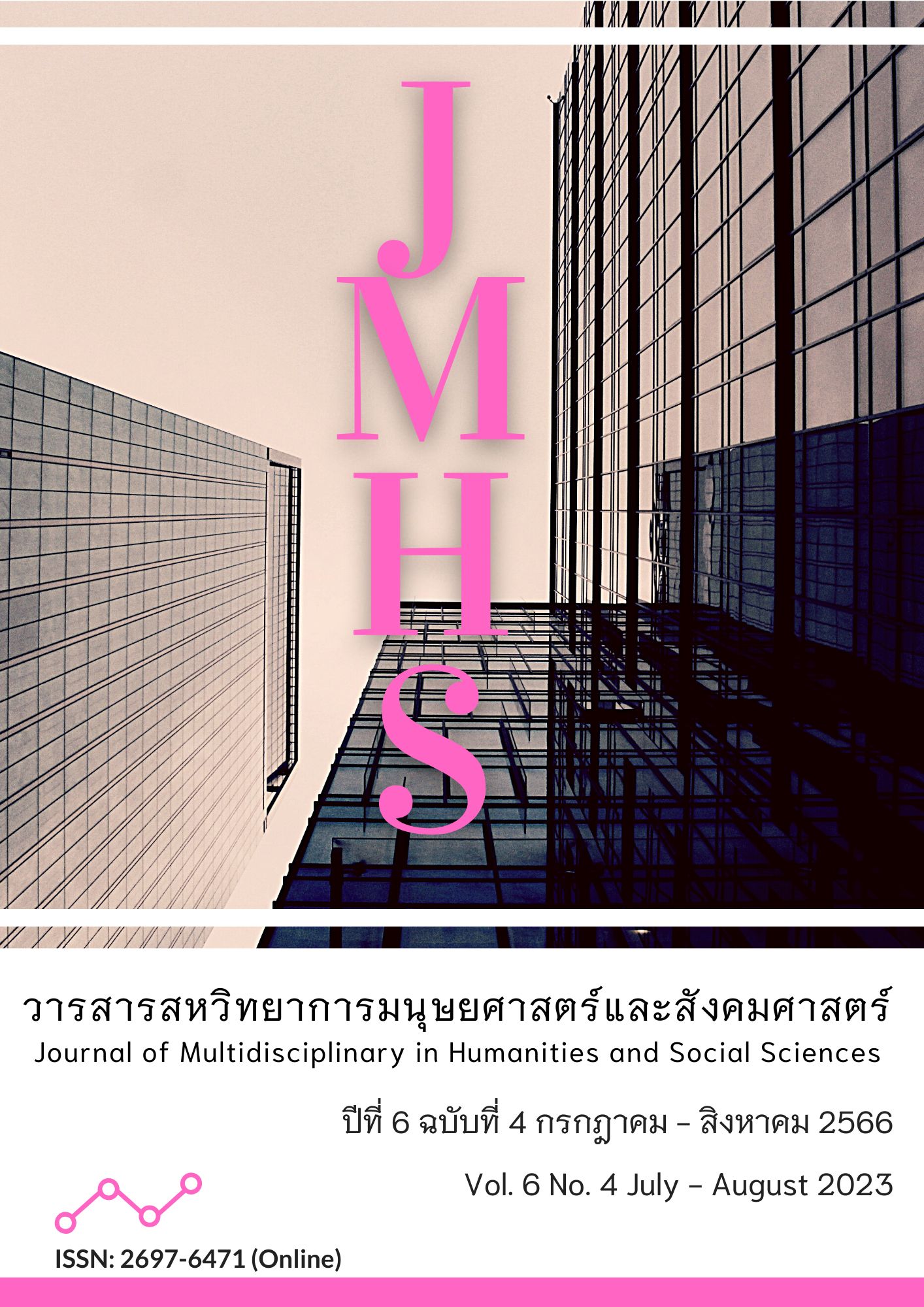การสื่อความหมายที่อยู่อาศัยในสื่อโฆษณาออนไลน์
Main Article Content
บทคัดย่อ
บทความนี้มีวัตถุประสงค์เพื่อศึกษาการสื่อความหมายภาพโฆษณาที่อยู่อาศัยในสื่อโฆษณาออนไลน์ รูปแบบการวิจัยโดยการวิเคราะห์ตัวบทโฆษณา ใช้แนวคิดการสื่อความหมายและสัญวิทยาเป็นกรอบการวิจัย โดยศึกษากลุ่มตัวอย่างจากภาพโฆษณาและภาพยนตร์โฆษณาที่อยู่อาศัยในสื่อออนไลน์ ผลการศึกษาพบว่าการสื่อความหมายในภาพโฆษณาแบ่งเป็นภาพประกอบที่สื่อความหมายตรงและภาพประกอบเชิงสัญญะที่สื่อความหมาย 5 ลักษณะ ได้แก่ สื่อความหมายถึงการเดินทางที่สะดวก สื่อความหมายถึงแนวคิดการออกแบบ สื่อความหมายถึงความหรูหราหรือราคาสูง สื่อความหมายถึงทำเลที่ตั้งและความสะดวกสบายในการเดินทางและสื่อความหมายถึงการส่งเสริมการตลาด ส่วนของภาพยนตร์โฆษณาพบลักษณะการสื่อความหมายผ่านการเล่าเรื่อง แบ่งเป็น 2 ลักษณะ ได้แก่ ภาพยนตร์โฆษณาสื่อความหมายถึงแนวคิดของโครงการที่อยู่ และภาพยนตร์โฆษณาสื่อความหมายถึงแนวคิดหรืออัตลักษณ์ของบริษัทผู้พัฒนาอสังหาริมทรัพย์ การโฆษณากลายเป็นช่องทางในการประกอบสร้างความหมายซึ่งส่งผลต่อการกำหนดความเป็นจริงในสังคม ความหมายเชิงสัญญะที่เชื่อมโยงเข้ากับบริษัทผู้ประกอบการผ่านช่องทางการโฆษณา โดยการนำเสนอโฆษณารูปแบบที่อยู่อาศัยที่มีความหลากหลายของเพื่อการตอบสนองพฤติกรรมผู้บริโภคในกระบวนการสร้างและแสวงหาความแตกต่าง โดยการใช้ภาพลักษณ์ วิถีชีวิต รสนิยม การโฆษณานั้นไม่ได้ทำหน้าที่แค่เพียงโน้มน้าวใจผู้บริโภค สร้างการรับรู้และจำจดสินค้าหรือแบรนด์ของสินค้าเท่านั้น แต่โฆษณายังเข้ามากำหนดการรับรู้และความเชื่อเกี่ยวกับสินค้าผ่านทางสื่อโฆษณา
Article Details

อนุญาตภายใต้เงื่อนไข Creative Commons Attribution-NonCommercial-NoDerivatives 4.0 International License.
ทัศนะและความคิดเห็นที่ปรากฏในวารสาร ถือเป็นความรับผิดชอบของผู้เขียนบทความนั้น และไม่ถือเป็นทัศนะและความรับผิดชอบของกองบรรณาธิการ
เอกสารอ้างอิง
กาญจนา แก้วเทพ. (2553). สายธารแห่งนักคิดทฤษฎี. (พิมพ์ครั้งที่ 2). กรุงเทพฯ: ภาพพิมพ์.
กาญจนา แก้วเทพ. (2553). แนวพินิจสื่อใหม่ในสื่อสารศึกษา. กรุงเทพฯ: ภาพพิมพ์.
กาญจนา แก้วเทพ. (2555). สื่อเก่า-สื่อใหม่ สัญญะ อัตลักษณ์ อุดมการณ์. กรุงเทพฯ: เอดิสันเพรส โพรดักส์.
กาญจนา แก้วเทพ. (2555). สื่อสารมวลชน : ทฤษฎีและแนวทางการศึกษา. (พิมพ์ครั้งที่ 4). กรุงเทพฯ: เอดิสันเพรส โพรดักส์.
กาญจนา แก้วเทพ และคณะ. (2554). สื่อเก่า สื่อใหม่ ใจเชื่อมร้อย. กรุงเทพฯ: ภาพพิมพ์.
ธนรัช เสมอภาค. (2563). การรับรู้สื่อโฆษณาที่มีผลต่อการตัดสินใจซื้อของผู้บริโภคในจังหวัดภูเก็ต. วารสารมนุษยศาสตร์และสังคมศาสตร์ มหาวิทยาลัยราชพฤกษ์, 7(1), 285-293.
สุนทร บุญญาธิการ. (2545). เทคนิคการออกแบบบ้านประหยัดพลังงานเพื่อคุณภาพชีวิตที่ดีกว่า. (พิมพ์ครั้งที่ 2). กรุงเทพฯ: จีเอ็ม แม็ก มีเดีย.
วรพรรณ เรืองโชติช่วง. (2559). การเปิดรับสื่อสังคมที่ส่งผลต่อพฤติกรรมการบริโภคอาหารคลีนของคนไทยในกรุงเทพมหานครและปริมณฑล(การค้นคว้าอิสระ, ปริญญานิเทศศาสตร์มหาบัณฑิต). มหาวิทยาลัยกรุงเทพ.
เว็บไซต์โฮมบายเออร์ไกด์. (2559). เกี่ยวกับบริษัท โฮมบายเออร์ไกด์ จำกัด. สืบค้นเมื่อ 15 กรกฎาคม 2562, จาก https://www.home.co.th/contactus
เว็บไซต์ DD property. (2562, 8 มีนาคม). ราคาที่ดินขึ้นสูงสุดรอบ 25 ปี สยามฯ-รามคำแหงขึ้นแท่นทำเลดาวรุ่ง. สืบค้นเมื่อ 24 เมษายน 2566, จาก https://www.ddproperty.com.
Alexa. (2010). Top Sites in Thailand. Retrieved from http://www.alexa.com/topsites/countries/TH
Shaeen, U., Khan, S.B., & Aziz, S. (2017). Manipulative Power of Pakistani Real Estate Print Advertisements. Journal of Social Science, 8(2), 267-283. https://jss.gcuf.edu.pk/index.php/jss/issue/download/13/63


